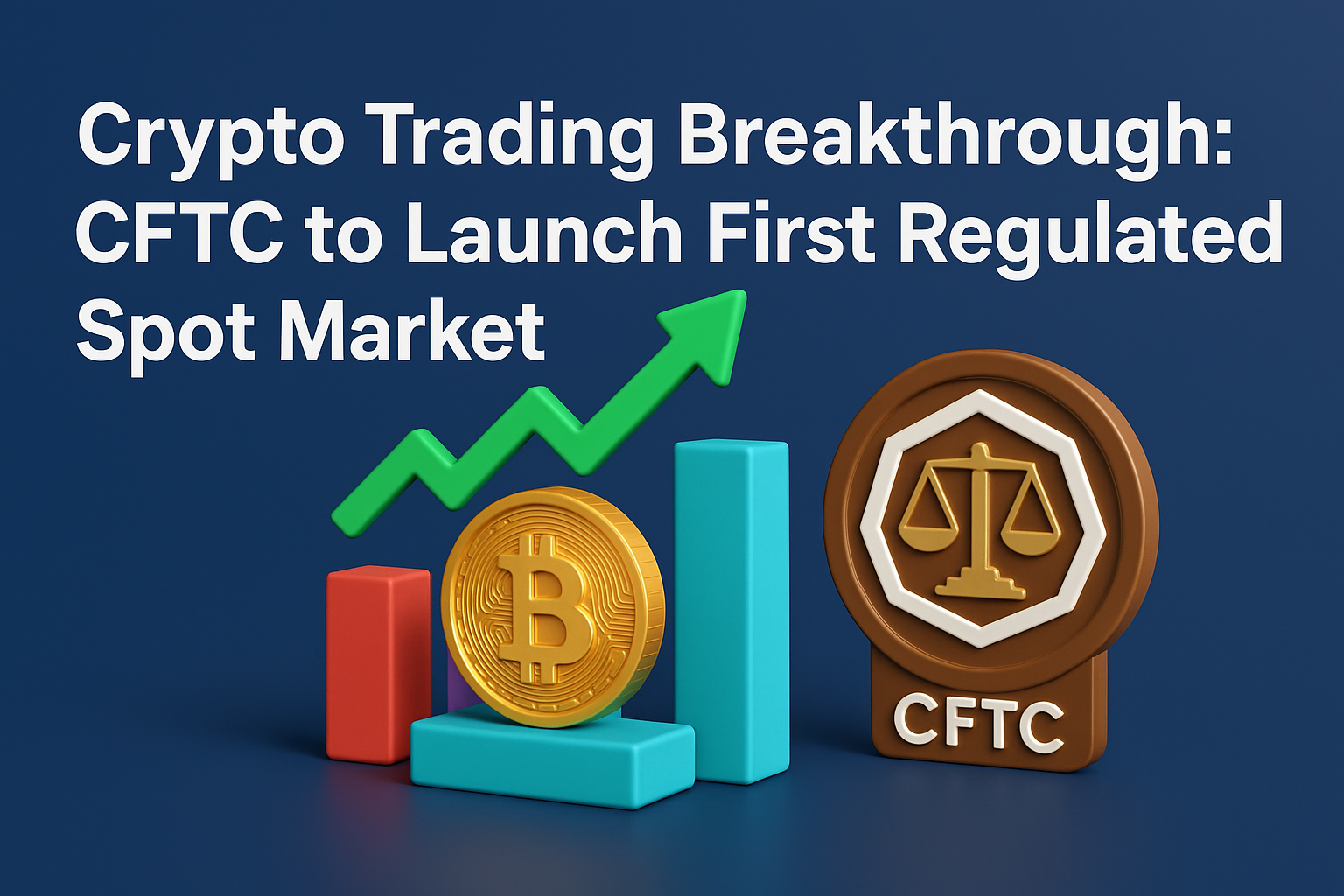The Commodity Futures Trading Commission (CFTC) is taking a major step forward by allowing spot crypto contract trading on regulated futures exchanges, also known as Designated Contract Markets (DCMs). This move marks a new era for crypto trading in the U.S., aiming to provide a more secure and regulated environment for digital asset transactions while working in coordination with the Securities and Exchange Commission (SEC).
Background: Why Spot Trading on Futures Exchanges Matters
Traditionally, the CFTC has only regulated derivatives—such as futures, options, and swaps. Spot markets have remained largely outside their jurisdiction unless fraud or manipulation is suspected. However, current laws already require that any leveraged or margined retail trading must happen on a registered DCM.
Now, by allowing DCMs to list spot crypto contracts, the CFTC is taking advantage of existing authority to expand regulated access to spot trading—without waiting for new legislation.
The New Initiative: CFTC’s Spot Trading Plan
Acting Chair Caroline Pham introduced a new initiative on August 4, 2025, called “Listed Spot Crypto Trading.” This plan would allow futures exchanges to list physically settled spot crypto contracts, making it possible for market participants to engage in regulated trading of cryptocurrencies like Bitcoin and Ethereum.
Highlights of the initiative include:
- Applying DCM standards to spot markets, including asset segregation, market surveillance, and investor protection
- Using existing authority under the Commodity Exchange Act to oversee these markets
- Opening the proposal for public comment to fine-tune the framework
The CFTC is actively seeking feedback from the public and industry stakeholders to shape the final rules.
Impact on Crypto Trading
What It Means for U.S. Traders
U.S. crypto users may soon have the ability to conduct spot trading of digital assets in a federally regulated environment. This offers better protection, increased transparency, and a safer space for retail and institutional investors alike.
Market Structure Improvements
The initiative will help unify the crypto ecosystem by bringing spot and derivative trading under one regulatory roof. This can enhance market efficiency, improve risk management, and build greater trust among market participants. The plan also supports innovation while reinforcing compliance and oversight.
Collaboration with the SEC and Other Regulators
The CFTC’s push for spot trading aligns with broader efforts in Washington to regulate the digital asset space. Working in tandem with the SEC under projects like the White House’s Crypto Sprint and digital asset policy initiatives, both agencies are defining clear jurisdictional roles.
The CFTC will handle commodities like Bitcoin and Ethereum, while the SEC oversees crypto assets considered securities. This coordination aims to minimize regulatory conflicts and promote legal clarity for all forms of digital asset trading.
What’s Next: Timeline and Public Input
The CFTC has invited the public to submit feedback by August 18, 2025. This feedback will help guide final rulemaking on compliance, market integrity, and interaction with securities regulations. The rollout of regulated spot trading is expected within the next 12 to 18 months, once the framework is finalized.
Conclusion
The CFTC’s decision to enable spot crypto trading on regulated futures exchanges is a groundbreaking step. It brings digital assets into a more secure and mature market structure. With increased oversight, better investor protection, and stronger market infrastructure, the future of crypto trading in the U.S. is becoming more robust and reliable.



